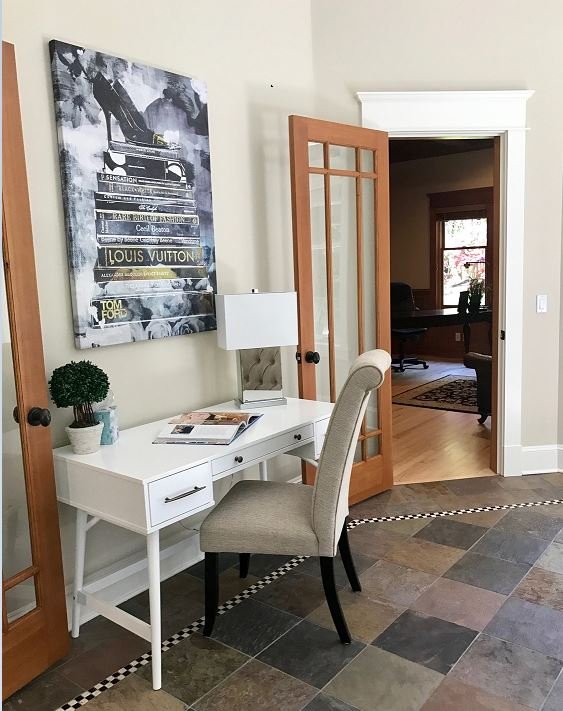In 2022, interior design embraces a blend of comfort, creativity, and sustainability. People continue to prioritize spaces that reflect their personal style, offer functionality, and foster well-being. The following are the major design trends shaping interiors this year.
Natural Materials and Biophilic Design
Natural elements are at the forefront of interior design in 2022. Biophilic design, which emphasizes connecting with nature, grows in popularity. Designers are incorporating natural materials like wood, stone, and cork into home decor to bring warmth and texture to spaces. Indoor plants, large windows, and natural light are also essential components of this trend, helping to create spaces that feel serene and connected to the outdoors.
Sustainable and Eco-Friendly Choices
Sustainability continues to be a driving force in 2022. People are increasingly conscious of their environmental impact and are opting for eco-friendly materials and furniture. Recycled and upcycled materials are being used in furniture and decor, and there’s a greater focus on durability and timelessness over fast, disposable trends. Many people are also choosing energy-efficient appliances and integrating sustainable technologies, such as solar panels, into their homes.
Warm, Earthy Tones
Warm, earthy color palettes dominate in 2022. Shades like terracotta, burnt orange, mustard yellow, and rich browns are used to create cozy, inviting spaces. These warm tones are paired with muted greens and blues to bring balance and tranquility to interiors. Soft neutrals like beige, taupe, and cream continue to be popular choices, providing a versatile base that can be layered with bold accent colors.
Maximalism and Eclectic Interiors
2022 sees a shift from minimalist aesthetics to more maximalist and eclectic designs. People are embracing vibrant patterns, layered textures, and bold color combinations. Mixing various styles, from vintage to modern, and adding personal touches through unique artwork, antique furniture, and hand-crafted accessories, are all central to creating dynamic, personalized spaces. This trend celebrates individuality and creativity, where each room tells a unique story.
Comfort and Wellness-Oriented Spaces
The focus on comfort and well-being continues in 2022. With people spending more time at home, interiors are designed to prioritize relaxation and ease. Soft, plush furniture, such as oversized sofas and comfortable armchairs, creates cozy living areas. Bedrooms are designed as restful retreats, with luxurious bedding and soothing colors. Wellness is integrated into homes with features like home gyms, meditation rooms, and spa-like bathrooms equipped with rainfall showers and deep soaking tubs.
Art Deco Revival
Art Deco influences make a strong comeback in 2022. This style is marked by bold geometric patterns, luxurious materials like marble and brass, and rich, vibrant colors. Art Deco’s glamorous and intricate design elements are being used in furniture, lighting, and accessories. The emphasis is on statement pieces that bring a sense of opulence to interiors.
Multifunctional Spaces
As remote work remains common, the demand for multifunctional spaces grows. Homes are designed to accommodate various activities—work, relaxation, exercise, and socializing—without compromising comfort or style. Home offices are integrated seamlessly into living areas, often using furniture that can be hidden away or transformed when not in use. Modular furniture and flexible layouts allow spaces to serve multiple purposes, making them more adaptable to changing needs.
Curved, Soft Edges
In 2022, the trend shifts toward softer, more organic shapes. Furniture pieces, such as sofas, chairs, and tables, feature rounded, curved edges instead of sharp, angular lines. This design choice creates a sense of comfort and flow, promoting a relaxed atmosphere. Curved furniture also adds a touch of elegance and modernity to interiors, making them feel more inviting.
Vintage and Retro Influences
Retro and vintage styles continue to inspire 2022 design. Mid-century modern furniture pieces, such as sleek wooden tables and retro-inspired chairs, are being reintroduced into contemporary settings. Bold patterns from the 70s—like geometric designs and abstract motifs—are reappearing in textiles and wall art. This trend emphasizes nostalgia and individuality, with homeowners incorporating unique, one-of-a-kind vintage finds to add character to their spaces.
Smart Home Integration
Technology remains a prominent feature of modern homes in 2022. Smart home integration continues to rise, with people seeking more efficient and convenient living spaces. Devices like smart thermostats, voice-activated lighting, and home security systems are seamlessly integrated into design. Additionally, home theaters and advanced sound systems are becoming essential for entertainment spaces, enhancing the overall quality of life.
In 2022, interior design is a celebration of individuality, comfort, and sustainability. People embrace warmer tones, biophilic elements, and multifunctional spaces while integrating bold, creative touches into their homes. Whether it's through the revival of vintage styles or the focus on wellness and smart technology, these trends reflect a desire to make homes more functional, personal, and connected to the natural world. As the year progresses, these design directions will continue to evolve, shaping the future of interiors.











